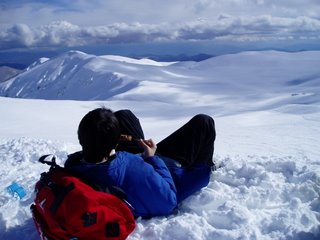







在秘魯旅行的時候,請了一個畢業人類學(Anthropology)和考古學(Archaeology)的先生做職業導遊(certified tour guide),他对秘魯本地的歷史丶風土丶和人情很有研究,根據他說,秘魯的原住人(aboriginals),是在大約二萬五千年前,由亞洲經過白令海峽(Bering Strait)未成之前的陸地,南下定居的「類似現代人」(Homo sapiens sapiens)的後裔。
在歐洲人未發現南美之前,原住人經歷了石器和骨器時代,又如中國歷史一樣,在公元前3000-6000BC左右開始,由搜獵的游牧散民(hunter-gatherers),漸漸變為集体的村莊農民(horticulturists and village peasants),又經過数千年的文化朝代轉變,直至公元十六世紀左右,「白人」發現了新大陸,就將所有佔領之土地資源,歸納為殖民地統治。所以今時今日,南美洲除了巴西說葡萄牙文之外,祕魯和其它國家的主要官方語文是español,無論是言語丶宗教丶和風土人情,都很受西班牙文化影響。
但8000千多年的文明,就不因為朝代的的轉變而喪失,反之,考古學家是不停地在秘魯發掘到無價的古物和遺跡,最近被例入為世界七大奇跡(Seven Wonders of the World)之一的馬丘比丘,「印加失落的城市」(Machu Picchu, the lost city of the Inca),就是一個好例子。
我在旅遊秘魯首都區丶公立博物館丶私人收藏所丶和手飾公司時,映了很多有關古代文明文化的攝影图片,在此貼上數幅与各位同享。





8 comments:
因為為外國殖民統治而喪失了自己的語言,
這是有點可惜的,
就是香港人一樣,
中英都不行,
還好的是殖民時間不及南美洲的長,
所以中文還是主要的母語!
很有中國的味道。
圖騰文化,看來保存得不錯哦!
btw,攝影燈光會壞了收藏品的保存年齡, 你咁近拍照得唔得架, 會唔會有人走來捉你架 =p
新鮮人: 我們都是歷史的產品或後果,有幸也有不幸。最重要的是要儘力对世界丶社会丶人類有所貢獻。
San Wen Ji: 是的,北和南美的原住民都是從亞洲過來,所以樣貌文化都有少少相同之処。
Hyacinthus: 像您一樣有公德心的「拍友」真是難得少見!! 無錯,我在博物館內的時候,先問導遊可不可以攝影,我架Canon相机有manual的shutter speed,不需要用攝光燈,拍時曝光時間拉長,手定窒氣就可辦。
Inca has fascinated me since I was a kid. The story of Pizaro's 200 conquistadors took over an empire of millions must be one of the most amazing historical events ever took place. Incas do not have a written language. The history people read are mostly from the conquistdadors' own self-promoting writings (such as Indians thought they were white gods).
I can Peruvians have their special looks and their heritage from both Spain and Andean. Lima reflects those characters.
Keith: The arrival of the conquistadors definitely signalled the beginning of the decline of the Inca's empire and of the subjugation and massive death of the inhabitants (e.g. smallpox epidemics against which the natives had no immunity).
The Inca actually ruled for only a relatively short period of time (approx 1400 to 1532 AD). Before them, there were different Andean societies and cultures that occupied the coasts, highlands and jungles of Peru. However, the Wari and Inca were the only two cultures that were able to control most of the vast territory of present day Peru.
Apart from European and aboriginal influence, the food one finds in downtown Lima also include cooking ingredients and style from Asia (e.g. ceviche - raw seafood marinated in lime juice).
Post a Comment